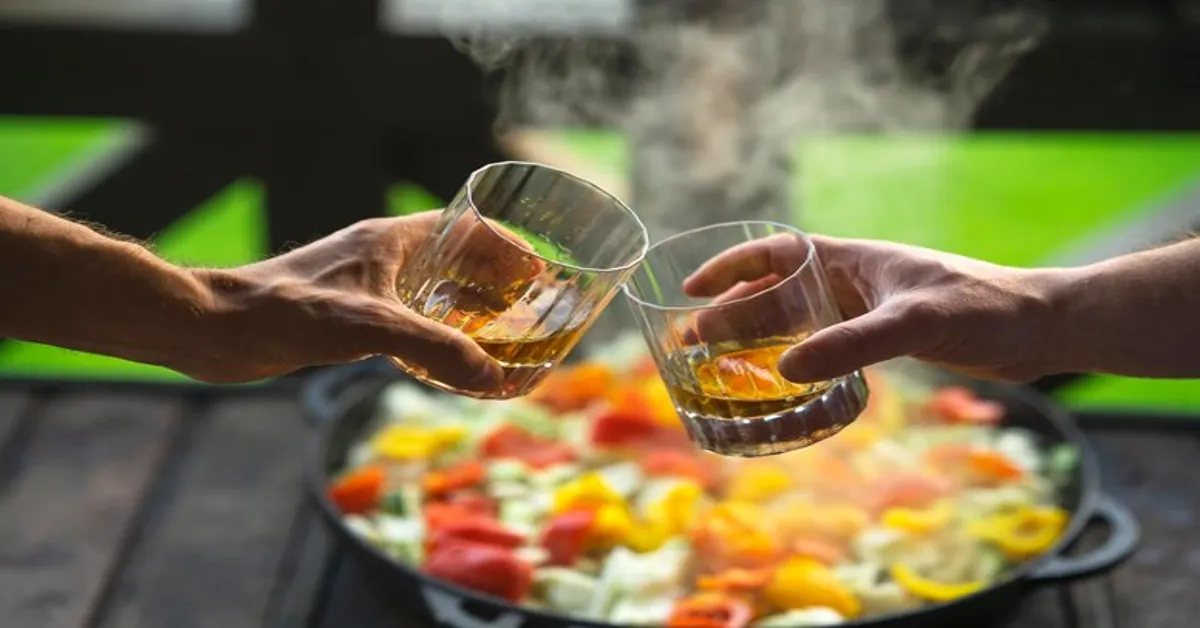Weller Bourbon is turning heads and raising glasses in 2023. Once a hidden gem adored by whiskey connoisseurs, it’s now stealing the spotlight. The rich history of Weller blends seamlessly with its rise to fame, making it one of the hottest spirits on the market today.
As more people discover its unique character and depth, demand has soared. But what makes Weller stand out among numerous bourbon brands? Is it the flavor profile, craftsmanship, or perhaps something deeper?
Join us as we delve into the world of Weller Bourbon—from its flagship Special Reserve to coveted bottles that are hard to find. We’ll explore what propels this brand forward in an ever-competitive landscape and why bourbon lovers can’t seem to get enough. Whether you’re a seasoned aficionado or just starting your journey into the whiskey realm, there’s something enticing about Weller that’s worth celebrating.
Weller Special Reserve
Weller Special Reserve is the entry point into the world of Weller Bourbon. With its vibrant green label, it beckons whiskey enthusiasts with promises of smoothness and flavor. This bourbon boasts a wheated mash bill, which sets it apart from many traditional bourbons that rely on rye for spice.
On the palate, drinkers experience a delightful harmony of caramel, honey, and vanilla notes. Its softness makes it approachable while still offering complexity—a rare balance that appeals to both novice sippers and seasoned tasters alike. The mouthfeel is velvety, making each sip an indulgent experience.
Aged for at least seven years, this bourbon presents a beautiful golden hue in the glass. The richness deepens over time as flavors meld together beautifully during maturation. You might notice subtle hints of dried fruit or oak dancing alongside those sweeter notes.
Beyond taste alone, Weller Special Reserve has become emblematic of craftsmanship in the bourbon industry. It represents not just quality but also accessibility—an inviting option for anyone eager to explore what makes Weller such a beloved name among spirits aficionados today.
W.L. Weller
W.L. Weller is a name that resonates deeply within the bourbon community. This brand has gained immense popularity for its rich heritage and exceptional craftsmanship. Founded in the 19th century, it honors William LaRue Weller, an innovator who was among the first to produce wheated bourbons.
What sets W.L. Weller apart is its unique mash bill, which replaces rye with wheat, lending a softer flavor profile that appeals to both newcomers and seasoned connoisseurs alike. The result is a bourbon that boasts a smooth finish, making it versatile for sipping neat or mixing into classic cocktails.
The flagship offering, Weller Special Reserve, showcases this signature style beautifully with notes of caramel and honeyed sweetness balanced by subtle oak undertones. As you explore deeper into their offerings like Antique 107 and Full Proof, you’ll find complexity and depth that elevates each experience.
In recent years, demand has surged due to limited availability and growing interest in premium spirits. Collectors are now vying for bottles as they become harder to come by on store shelves.
Weller Lineup Highlights
Weller Bourbon has captured the hearts of whiskey enthusiasts with its unique expressions. Each variant offers a different experience, making the lineup diverse and exciting. The flagship, Weller Special Reserve, is known for its smooth sweetness and notes of caramel and honey. It’s an ideal entry point for those new to wheated bourbons.
Next up is Weller Antique 107, which boasts a higher proof that brings forth rich flavors of dark fruit and spice. This bourbon challenges both newcomers and seasoned drinkers alike with its complex palate. It’s often sought after for sipping neat or using in classic cocktails.
For those who crave something truly exceptional, Weller 12-Year-Old stands out as a fan favorite. With twelve years of aging, it delivers deep layers of vanilla, oak, and dried fruits—a luxurious choice that’s hard to find but worth the hunt.
There’s the limited-release William Larue Weller within the Buffalo Trace Antique Collection. Known for its robust character and high proof, this offering elevates any bourbon collection while showcasing what makes Weller so special in today’s market.
Market Dynamics and Value Proposition
The bourbon market is experiencing a remarkable shift, with Weller Bourbon leading the charge. As consumer preferences evolve, there’s an increasing demand for high-quality spirits that offer both craftsmanship and character. Weller has positioned itself uniquely within this landscape, appealing to enthusiasts and casual drinkers alike.
What sets Weller apart is its wheated mash bill, resulting in a softer and sweeter profile compared to traditional bourbons. This distinctive taste resonates with many who seek something different yet refined. It creates an inviting entry point for newcomers while maintaining depth for seasoned aficionados.
Moreover, limited availability plays into the allure of Weller Bourbon. The scarcity drives excitement and adds perceived value among collectors and investors. Bottles often sell out quickly at retail locations, further fueling interest on secondary markets where prices can skyrocket.
As more people discover Weller’s unique offerings through word-of-mouth recommendations or curated tasting events, its reputation continues to grow. This momentum not only boosts sales but also reinforces the brand’s position as a staple in any whiskey lover’s collection.
Secondary Market Forecast
The secondary market for Weller bourbon has been experiencing a notable surge. Many enthusiasts are keen to get their hands on limited editions and rare bottles, driving prices upward. This trend reflects not just a growing interest in the brand but also an appreciation for quality craftsmanship.
As more collectors enter the scene, demand continues to outpace supply. Bottles that were once easily found on shelves now trade at premium rates among aficionados. For example, Weller 12 Year Old has become a sought-after gem that can fetch significantly higher prices than its retail value.
Online platforms facilitate this trading phenomenon, allowing buyers and sellers from around the world to connect effortlessly. With social media elevating visibility, even casual drinkers are learning about these coveted bourbons and joining the hunt.
Looking ahead, experts predict sustained growth in this niche market segment as new releases generate excitement each year. The allure of owning a piece of bourbon history will likely keep collectors engaged and eager for future drops from Weller’s esteemed lineup.
Brand Collections and Tasting Notes
Weller Bourbon boasts a compelling range of expressions that cater to various palates. Each variant offers unique tasting notes, making them appealing for both newcomers and seasoned bourbon enthusiasts. The charm lies in the subtleties of flavor that unfold with each sip.
Weller Special Reserve is a fantastic starting point. It presents gentle vanilla sweetness combined with honeyed caramel. This approachable profile makes it perfect for sipping neat or mixing into cocktails.
Moving up the lineup, Weller Antique 107 showcases bolder characteristics. Expect a rich tapestry of dark fruits, spicy oak, and warm baking spices. Its higher proof brings an intensity that delights those craving more robust flavors.
The rare Weller 12-Year-Old features deep complexity with layers of dried fruit and nutty undertones. Aged to perfection, its smoothness speaks volumes about craftsmanship while offering hints of chocolate and leather on the finish. Exploring Weller’s offerings can be an exciting journey through taste and aroma every time you pour a glass.
Awards and Customer Care
Weller Bourbon has made quite a name for itself in the spirits world, and its accolades speak volumes. Recognized by various industry awards, each expression showcases exceptional craftsmanship. The Special Reserve, in particular, has garnered praise for its rich flavor profile and smooth finish.
Awards are not just about bragging rights; they also reflect quality assurance. Weller consistently receives high ratings from critics and enthusiasts alike. This recognition boosts consumer confidence and elevates its status among bourbon aficionados.
Customer care is another essential element of the Weller experience. The brand prioritizes engaging with fans through social media platforms and tastings at events. Their responsive customer service ensures that any questions or concerns are addressed promptly.
This commitment to quality doesn’t stop with production; it extends to the overall customer journey. Knowing they have a reliable support system enhances loyalty among collectors and casual drinkers alike, making every bottle of Weller Bourbon even more valuable as part of their collection.
Final Thoughts
Weller Bourbon has undeniably captured the attention of whiskey enthusiasts and casual drinkers alike in 2023. Its rich heritage, characterized by a unique mash bill and careful craftsmanship, continues to set it apart from other bourbons on the market. With Weller Special Reserve leading the charge, this brand has made waves for its smoothness and versatility—a perfect choice for sipping neat or mixing into a cocktail.
The lineup boasts impressive offerings like W.L. Weller Antique and Weller 12-Year-Old, each providing distinct tasting experiences that cater to various palates. The rise in popularity is not just attributed to taste but also due to savvy marketing strategies that have cultivated a loyal following.
Market dynamics suggest continued growth for Weller Bourbon as demand outstrips supply. Collectors are increasingly eyeing bottles as their values soar on secondary markets, indicating both investment potential and cultural significance within the spirits community.
With accolades pouring in from industry experts along with devoted fan reviews highlighting exceptional customer care practices, it’s clear why Weller remains such an alluring choice among bourbon aficionados. As trends evolve, one thing is certain: this beloved spirit will continue to thrive while expanding its influence across bars and homes worldwide.









